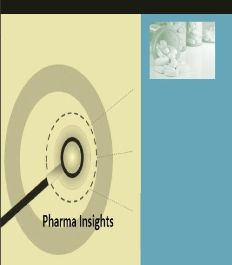Dublin-based Research and Markets has announced the addition of the “Endometriosis-Pipeline Insights“ report to their portfolio of market research and analysis portfolio of offerings.
Endometriosis is an often-painful disorder of unknown cause occurs when cells of tissue that normally forms the lining of the uterus — the endometrium — migrates to grow in in a location outside of the uterus, most commonly in other organs of the pelvis: ovaries, vagina, cervix, bladder, bowels, rectum or the tissue lining the pelvis. Rarely, endometriosis implants can manifest outside the pelvis, such as on the liver, in old surgery scars, and in extremely rare instances in or around the lungs or brain. These “colonies,” which are not cancerous, are called endometriosis implants, and can cause pain, heavy bleeding, bleeding between periods, and are associated with infertility, although while he disorder is more common in women who are infertile than in fertile women,Endometriosis is thought to not necessarily cause infertility
Every month, a woman’s ovaries produce hormones that tell the cells lining the uterus to swell and get thicker until the uterus sheds these cells along with blood and tissue through your vagina when the woman has her monthly menstrual period.
Like uterine cells, endometriosis growths react to ovarian hormones growing and bleeding during menstrual periods, and over time, implants may add more tissue and blood, the buildup of which leads to pain and other symptoms. When endometriosis occurs in the ovaries, cysts called endometriomas may develop, and surrounding tissue may become irritated, eventually developing scar tissue and adhesions.
While the cause of endometriosis.is unknown, some researchers think it is an autoimmune disorder. It also tends to run in families, so an element of heritability may be in play.
Risk factors for endometriosis include having a mother or sister with endometriosis, early onset of menses, never having had children, frequent periods or menstruation lasting seven or more days, having a closed hymen, which blocks the flow of menstrual blood during the period.
Pelvic pain is the primary endometriosis symptom, with painful periods in the lower abdomen before and during periods, cramping for a week or two before and during menses, pain during or following sexual intercourse, painful bowel movements, pelvic or low back pain. Pain intensity varies, with some women who have a lot of tissue in their pelvis experiencing no pain at all, while some women with milder cases of the disease have severe pain.
Treatments for endometriosis may include exercise and relaxation techniques, painkillers — OTC or prescription, hormone therapy, and surgery in cases of severe pain that does not respond to less invasive treatments, with removal of the uterus, fallopian tubes, and both ovaries (a hysterectomy) being the best chance for a cure.
 Endometriosis – Pipeline Insights provides in-depth analysis of the pipeline assets across the Endometriosis research and treatment fields. The report’s main objective is to track competitor pipeline molecules, related research activities, technology, collaborations, in-licensing and out-licensing deals. The Endometriosis Report is designed to identify emerging players with potentially strong product information to aid in creating effective counter-strategies to gain competitive advantage.
Endometriosis – Pipeline Insights provides in-depth analysis of the pipeline assets across the Endometriosis research and treatment fields. The report’s main objective is to track competitor pipeline molecules, related research activities, technology, collaborations, in-licensing and out-licensing deals. The Endometriosis Report is designed to identify emerging players with potentially strong product information to aid in creating effective counter-strategies to gain competitive advantage.
The Endometriosis – Pipeline Insights Report covers the Endometriosis pipeline molecules at various stages of development like Pre-registration phase, clinical phases (Phase III, Phase II & Phase I), pre-clinical and discovery phases, and also provides endometriosis-related therapeutic assessments by molecule type, route of administration, monotherapy and combination products. The Report also highlights the discontinued and inactive projects in the endometriosis treatment pipeline.
The report provides an overview of the endometriosis landscape globally, containing drug profiles that include product descriptions, MOA, licensors & collaborators, technology, development partner and chemical information, and covers the Endometriosis pipeline on the basis of target, MOA, route of administration, technology involved and molecule type.
Other content includes reviews of key players involved in endometriosis therapeutics development, and company profiling, with pipeline products coverage based on various stages of development from NDA filings to discovery, and pipeline assessment by monotherapy and combination therapy products, stage of development and molecule type. The Table of Contents can be found here:
http://www.researchandmarkets.com/research/d6vlwc/endometriosispipe
More information on the Endometriosis – Pipeline Insights Report can be found at:
http://www.researchandmarkets.com/research/d6vlwc/endometriosispipe
Sources:
Research and Markets
National Library of Medicine PubMed
MedLine Plus
Mayo Clinic
MedicineNet
MedLine Plus
Image Credit:
Research and Markets
